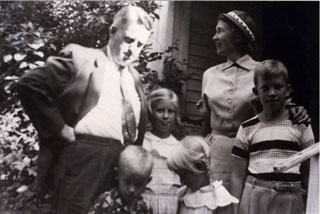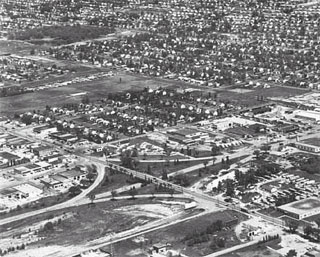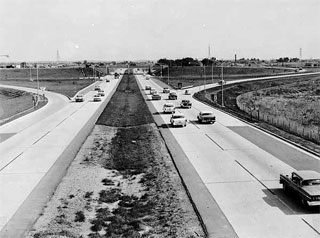Emily Day: Splendid Isolation
Every community experiences growing pains as they are developed and boundaries are expanded. The City of Richfield is no exception. As a first-ring suburb of Minneapolis, it was one of the fastest growing communities in the post-war housing boom. Long-time resident, Emily Day, shared her perspective on the changes that faced Richfield during that time, and the challenges it faces today. She was interviewed for the Richfield Oral History Project by Thomas Saylor in 2007.
Audio
Transcript
TS: A couple other things here. Richfield, if you look at a map, is bounded by highways, really. And what I’m wondering is in what ways positive or negative you feel that Richfield was impacted by the construction of highways 62 and 494?
ED: It’s just cut off from the rest of anyplace by 62 and 494. And 35W goes down through the middle of it, and the other two just make firm boundaries. That’s all. We have become an isolated little community. Just a tiny little gem. [Chuckles]
TS: The "gem" kind of answers my question. But that being cut off, has that been good for Richfield’s development or not so good, do you think?
ED: Well, I think it’s good for it as a residential community. It’s not good from the point of view of connection with other people and stores and activities of any kind. We have to go outside of the city for almost everything.
TS: The Hub Shopping Center has sure changed over the years, as an example.
ED: It used to be a real Hub. I mean, it had a big department store in it and now it’s not. ...It’s small. Marshall’s is not a big department store. So that if you want to go to anyplace with a lot of selection of goods, you’ve got to go out of the city.
TS: So the whole notion of a bedroom community is good for building almost a quiet little enclave...
ED: Exactly. ...We’re just a little old quiet community. But actually because we’re low income, we have a real mixture of people, but they’re on the lower end of the income scale.
TS: Does that cause in your mind some concern for Richfield in the next ten or twenty years?
ED: I suppose so. Yes. I suppose . . . it’s never going to be an elite community, I don’t think. I think it can continue to be a quiet little neighborhood kind of community, which is what I hope for.
TS: It’s interesting how the city has taken it upon itself . . . I mean, the whole re-development with getting Best Buy’s headquarters in, the development around 66th and Lyndale. There’s a whole bunch of high rises and some new development, so it looks like the city is looking at itself and trying to be intentional and proactive about development into the future, not simply let itself become a slum.
ED: I think the city is doing a great job that way. I just admire those guys that are thinking ahead and they are planning to make this a comfortable middle class neighborhood. I just keep feeling that they think of it as a neighborhood and that’s what I like about it. But they want the neighborhood not to be all white. They want the neighborhood to be a mixture of people who like to live together from many backgrounds. ...Just so that they’ll be good neighbors.






Source
Day, Emily; Thomas Saylor, Interviewer, Richfield Oral History Project, Minnesota Historical Society Oral History Collections, 2007.


